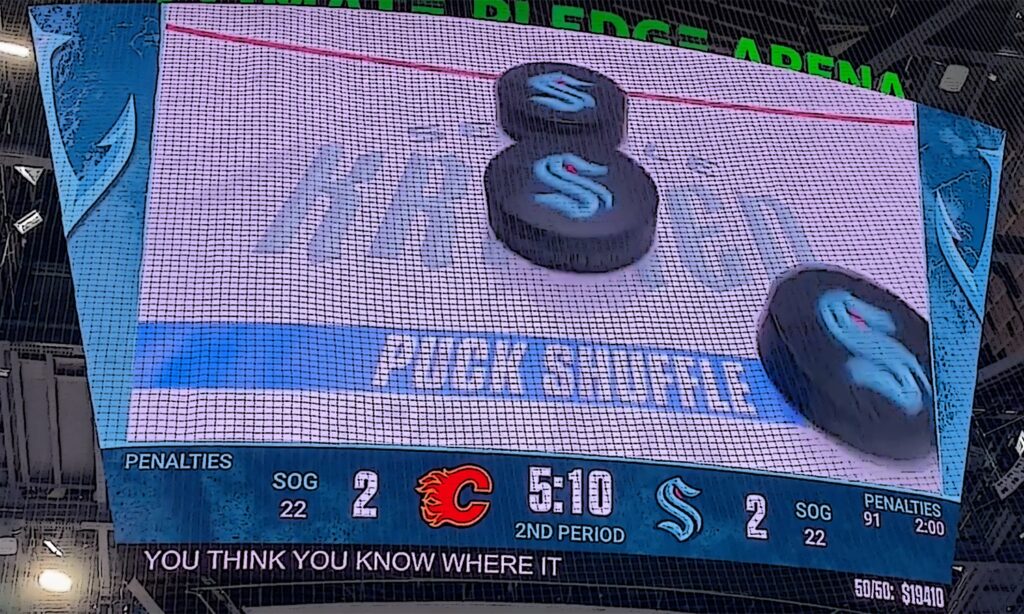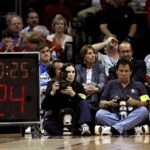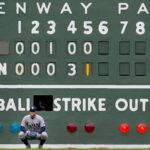When it comes to the professional team sports in America, each have a unique game structure.
There are exceptions, obviously, such as basketball (NBA) and American football (NFL), which both are made up of four quarters.
Still, the quarters for both these sports don’t match in length. The NBA has 12-minute quarters versus 15-minutes for the NFL.
Baseball doesn’t even use a game clock, but rather a system of innings (9) governed by outs (six per inning).
Moreover, soccer (MLS) is made up of two halves, similar to NCAA (College) Basketball.
Meanwhile, the format for hockey games stands on its own. Games are actually split into periods.
Terms like halves or quarters are not applicable in hockey. Here's why...
How many Periods are in a Hockey game?
There are 3 periods in a hockey game made up of 20 minutes each (or 60 minutes total). If the score is tied after sixty minutes, the game will extend to a 5-minute overtime period, followed by a shootout. During the playoffs, teams will play sudden-death overtime to settle a tie which is also made up of 20-minute periods.
Players are given breaks between each period similar to halftime in Basketball and Football.
However, hockey does not refer to these breaks as halftime since there are at least two rest periods for each game.
These breaks, or rest periods are known as intermissions. Intermissions following the first and second period are 18-minutes long.
Were NHL Hockey games always 3 Periods long?
NHL games were not always 3 periods long.
Prior to the 1910-11 season, NHL games were made up of 2 x 30-minute periods.
The main reason why games were divided into 3 periods had to do with the quality of the ice for the players.
The NHL decided it would be more beneficial to resurface the ice with the Zamboni every 20 minutes rather than 30 minutes.
The more you play on an ice surface, there will be build-up of snow and higher potential for grooves and ice chips to develop as it softens.
Actually, the build-up of snow causes the game to slow down since the puck cannot travel as smoothly due to the higher amount of friction.
Furthermore, the grooves can cause players to slow down which, in turn, affects the overall speed of the game.
Ice chips have the unfortunate potential of causing serious injuries to players. At minimum, the ice chips can cause players to unexpectedly trip to the ice.
And more seriously, a player’s skate can get caught in the groove or chip causing severe leg injuries (sprains or torn ACLs/MCLs, etc.).
Keep in mind that although periods are each 20 minutes long, the actual time players spend on the ice each period is about 40-45 minutes in real-time.
This includes all the whistles in between plays such as for penalty calls, goals, offsides and icing.
Intermissions between Periods
The NHL introduced intermissions between periods to resurface the ice, starting at 10 minutes long.
Eventually, the intermissions reached 18-minutes long killing several birds with one stone:
Resurfacing of the ice
As mentioned earlier, the intermission time is used to resurface the ice for optimal playing conditions.
Player Breaks and Team Regroup
Players and coaches are returned to their respective dressing rooms so they can basically rest up between periods.
In addition, the team coaches discuss strategies to change the course of the game and regroup their players.
Spectator Breaks: Food, Beverages and Bathroom
Audience members can use the time to restock up on food and beverages as the game length in real-time is 2.5+ hours long.
Since many spectators enjoy drinking alcoholic beverages, the need for the bathroom break is essential. If you’ve ever attended any sporting event, especially a hockey game, the bathrooms get extremely packed during the breaks.
Advertisements
For viewers watching the game at home, the league uses the intermissions to advertise their sponsors through commercials.
This is in addition to the scheduled TV timeouts during each period.
Audience members are also subject to advertisements on the main scoreboard during the intermission pauses.
Depending on the venue, the league will use the intermission time to launch free t-shirts to spectators or give out freebies from the rafters (or remote-controlled blimps) from in-house sponsors.
Can a Hockey game last longer than 3 Periods?
NHL and other professional league games can certainly last longer than 3 periods (also known as regulation time).
As mentioned earlier, if the game is tied after 60 minutes (3 periods) of play, the game will head to overtime.
In the regular season, there is a 5-minute overtime during which teams play 3-on-3.
If the game is still tied after overtime, the game is settled through a shootout session. It should be noted that the ice is not resurfaced any time after the 3rd period.
In the playoffs, the rules are slightly different as games are decided by sudden death overtime. That is, the first goal scored in overtime will end the match.
Playoff overtime periods are 20-minutes in length and are played 5-on-5 – similar to regulation time.
The only difference is that all intermissions after the third period are only 15-minutes long.
And since someone must score to end the match, you’re probably as to how long NHL games have extended.
So, here’s a list of the longest NHL games on record.
List of hockey games with the most Overtime Periods played
| Date | Home Team | Opponent | Score | Total Length | Overtime Periods | |
|---|---|---|---|---|---|---|
| 1 | March 24, 1936 | Montreal Maroons | Detroit Red Wings | 0-1 | 176:30 | 6 |
| 2 | April 3, 1933 | Toronto Maple Leafs | Boston Bruins | 1-0 | 164:46 | 6 |
| 3 | May 4, 2000 | Pittsburgh Penguins | Philadelphia Flyers | 1-2 | 152:01 | 5 |
| 4 | August 11, 2020 | Tampa Bay Lightning | Columbus Blue Jackets | 3-2 | 150:27 | 5 |
| 5 | April 24, 2003 | Dallas Stars | Anaheim Mighty Ducks | 3-4 | 140:48 | 5 |
| 6 | May 18, 2023 | Carolina Hurricanes | Florida Panthers | 2-3 | 139:47 | 4 |
| 7 | April 24, 1996 | Washington Capitals | Pittsburgh Penguins | 2-3 | 139:15 | 4 |
| 8 | April 11, 2007 | Vancouver Canucks | Dallas Stars | 5-4 | 138:06 | 4 |
| 9 | March 23, 1943 | Detroit Red Wings | Toronto Maple Leafs | 2-3 | 130:18 | 4 |
| 10 | May 4, 2008 | Dallas Stars | San Jose Sharks | 2-1 | 129:03 | 4 |
| 11 | March 28, 1930 | Montreal Canadiens | New York Rangers | 2-1 | 128:52 | 4 |
| 12 | April 18, 1987 | Washington Capitals | New York Islanders | 2-3 | 128:47 | 4 |
| 13 | April 27, 1997 | Buffalo Sabres | New Jersey Devils | 1-0 | 125:43 | 4 |
| 14 | March 27, 1951 | Detroit Red Wings | Montreal Canadiens | 2-3 | 121:09 | 4 |
| 15 | March 27, 1938 | New York Rangers | New York Americans | 2-3 | 120:40 | 4 |
How many Periods in a Recreational Hockey game?
For the amateur leagues out there, most games are divided into 3 periods.
On occasion, I’ve seen two periods used, but this is usually for 3-on-3 leagues with shorter allocated time blocks.
The major difference between recreational and professional league games is the resurfacing of the ice.
Recreational leagues will only Zamboni the ice prior to the start of each game. The reality is that the ice surface accumulates plenty of snow by the 3rd period but remains in relatively good condition.
In terms of real-time play, the ice is being used for just over an hour, compared to professional sports leagues of 40 minutes (each period).
You can also argue that pro players will carve into the ice surface more so than amateur leagues and therefore the wear-and-tear is far greater throughout each period.
Final Thoughts
As a lifelong hockey player and fan of the game, the system of three periods is deep-rooted in my DNA.
I can’t imagine switching to another format such as quarters or halves.
Considering players wear 15 lbs (or more) of equipment day-in and day-out, the intermission rests are well earned.
Not to mention they deserve rest for putting up with body checks, fights and 100-mph pucks flying around.
For fans attending the game, these intermissions are also highly appreciated.
It’s better to take bathroom and food breaks during these pauses rather than mid-match.
There’s nothing worse than rushing back to your seat only to hear the crowd screaming at the top of their lungs. That’s a telltale sign that you just missed an exciting play.
And watching the match on those outside TV monitors is just not the same. You might as well have tuned into the game from home.
So, now you know where and why I stand with the structure of hockey games.
You’ll never convince me otherwise. Period.






